Space Optics Instrument Design & Technology 2018
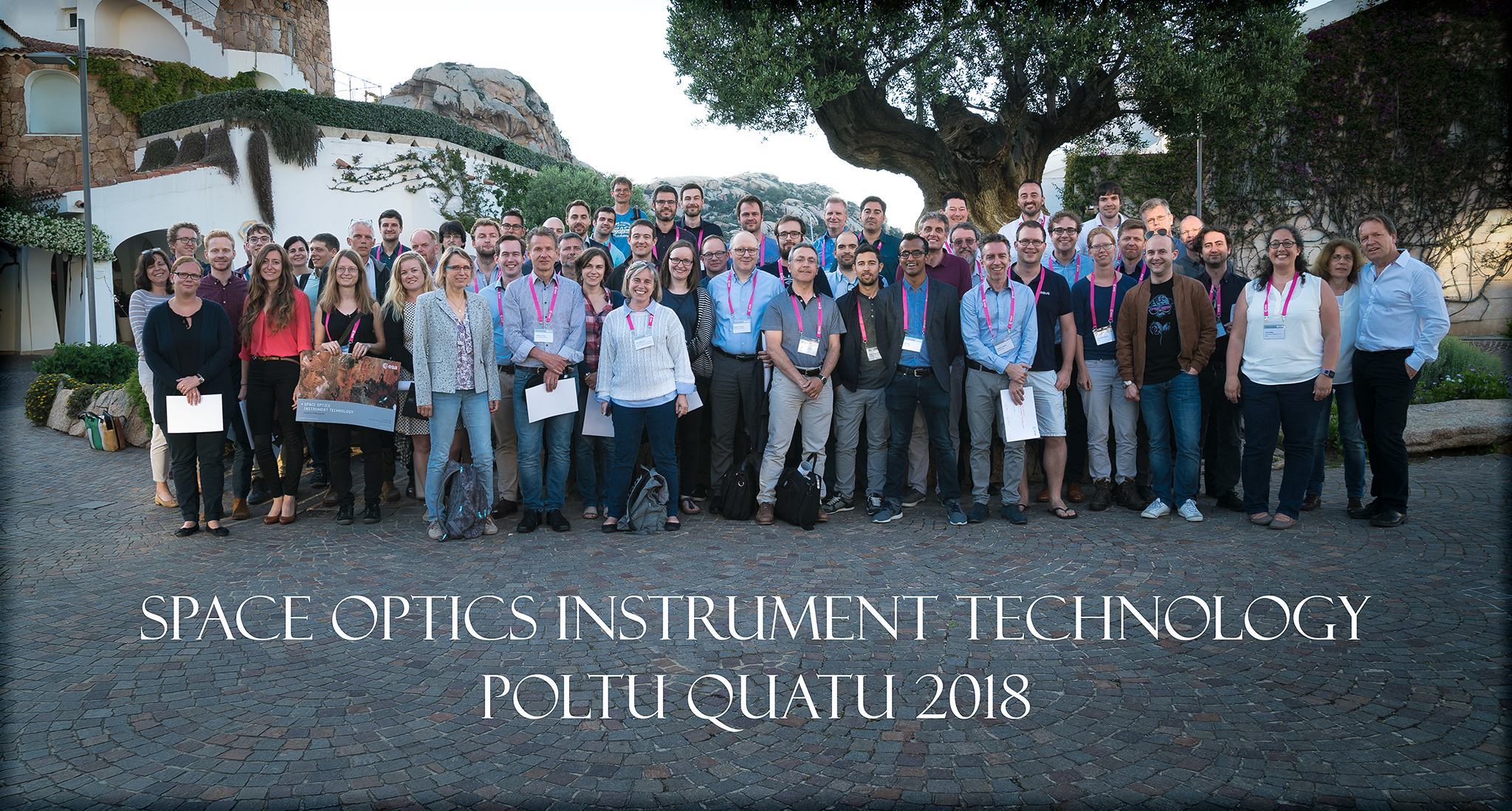
In May 2018 56 students from 10 countries and 28 companies, institutes or organisations were following the course
Course Overview and Content
In 2018 the topic of the course was Space Optics Instrument Technology. The course was held held from Monday 14 May 2018 to Friday 18 May 2018. The venue was for the third time the Grand Hotel Poltu Quatu, close to Olbia - Sardinia (Italy).
The 2018 course was again given in two parallel classes with a maximum of 30 participants per class. Both classes had the same lecture content.
The 2018 course was again given in two parallel classes with a maximum of 30 participants per class. Both classes had the same lecture content.
SOIDT - Technology 2018 Curriculum
Lecture Abstracts and Lecturer
Optical CAD Instrument Modelling and Analysis - Dmitriy Worontsow
Within this presentation the participants will get a general overview of the optical software CodeV. They will learn how to use the software, building lens systems and performing the performance analysis of the optical design. An introduction to lens system optimization and tolerance analysis will be given. The course is including both the theoretical part as well as practical implementation in the software. The participants will have the possibility to analyze and optimize all the examples of the course on their own laptop.
Within this presentation the participants will get a general overview of the optical software CodeV. They will learn how to use the software, building lens systems and performing the performance analysis of the optical design. An introduction to lens system optimization and tolerance analysis will be given. The course is including both the theoretical part as well as practical implementation in the software. The participants will have the possibility to analyze and optimize all the examples of the course on their own laptop.
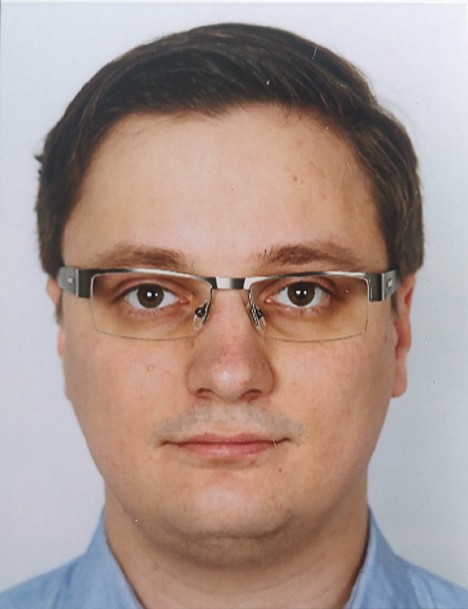
Dmitriy Worontsov, MSc. Physics
Position: Application Engineer, LightTec
Lecturing: Introduction to CodeV
Dmitriy is working for four years at the CodeV support department of LightTec, the European distributor of optical design software CodeV, LightTools, RSoft and LucidShape. He is there responsible for the technical support of CodeV customers, the organization of Information days and trainings, the customer training, pre-sale support and the representation of the company at exhibitions.
cv
2013 – present CodeV Application Engineer at LightTec, Germany
2011 – 2013 Optical Engineer at Lab CAD of Opto-Information and Energy Saving Systems, NRU IFMO, St-Petersburg, Russia
2008 – 2010 Master of Science, Designing of optical imaging systems, NRU IFMO, St-Petersburg
2004 – 2010 Bachelor of Science, Designing of optical imaging systems, NRU IFMO, St-Petersburg
Lecturing: Introduction to CodeV
Dmitriy is working for four years at the CodeV support department of LightTec, the European distributor of optical design software CodeV, LightTools, RSoft and LucidShape. He is there responsible for the technical support of CodeV customers, the organization of Information days and trainings, the customer training, pre-sale support and the representation of the company at exhibitions.
cv
2013 – present CodeV Application Engineer at LightTec, Germany
2011 – 2013 Optical Engineer at Lab CAD of Opto-Information and Energy Saving Systems, NRU IFMO, St-Petersburg, Russia
2008 – 2010 Master of Science, Designing of optical imaging systems, NRU IFMO, St-Petersburg
2004 – 2010 Bachelor of Science, Designing of optical imaging systems, NRU IFMO, St-Petersburg
Manufacturing Technologies for Space Optics - Roland Geyl
We will review in this course module the subject of precision optical manufacturing for space optics. After first detailing what is a ‘good’ optical surface and doing a brief historical overview, we will present the generic optical manufacturing process and then review the various technologies dedicated to the production of quality optical surface. Glass, metal and ceramic will be addressed. Grinding-lapping-polishing is the main subject but other techniques like replication, single point diamond turning and material deposition technique will also be addressed. The typical defects of optical surfaces, their impacts and prevent/repairs actions will be reviewed to support student future real life.
We will review in this course module the subject of precision optical manufacturing for space optics. After first detailing what is a ‘good’ optical surface and doing a brief historical overview, we will present the generic optical manufacturing process and then review the various technologies dedicated to the production of quality optical surface. Glass, metal and ceramic will be addressed. Grinding-lapping-polishing is the main subject but other techniques like replication, single point diamond turning and material deposition technique will also be addressed. The typical defects of optical surfaces, their impacts and prevent/repairs actions will be reviewed to support student future real life.
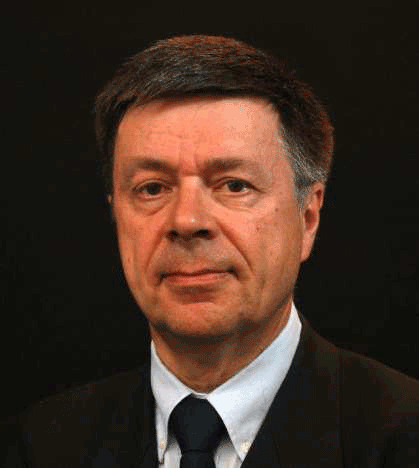
Roland Geyl, MSc. Optical Engineer
Position: Bussiness development, REOSC
Lecturing: Introduction to Optical Manufacturing Technologies
Roland GEYL is an Optical Engineer graduated from Paris Orsay Institute of Optics Maurice working at Reosc, SAFRAN Group in France. During more than three decades he contributed to most of the space projects at REOSC either as lens designer, manufacturing and testing engineer, program manager, sales manager and plant director. Today he focuses on business development. His main task is to explore new business opportunities for REOSC and act as expert in lens design, manufacturing and testing. Current research is on freeform optics for astronomy and space.
cv
2013 - today Reosc, France, Business development
1999 - 2012 Sagem-Reosc, France, Sales Manager & Safran Emeritus Expert in High performance optics
1981 - 1998 Reosc, France, Lens design & Engineering / Optical manufacturing & Testing/ Program management / Division Manager )
1976 - 1979 Study at Ecole Superieure d'Optique (Major of promotion)
1982 - 2002 lecturer of Lens Design course at the Ecole Supérieure d'Optique, Paris-Orsay
Lecturing: Introduction to Optical Manufacturing Technologies
Roland GEYL is an Optical Engineer graduated from Paris Orsay Institute of Optics Maurice working at Reosc, SAFRAN Group in France. During more than three decades he contributed to most of the space projects at REOSC either as lens designer, manufacturing and testing engineer, program manager, sales manager and plant director. Today he focuses on business development. His main task is to explore new business opportunities for REOSC and act as expert in lens design, manufacturing and testing. Current research is on freeform optics for astronomy and space.
cv
2013 - today Reosc, France, Business development
1999 - 2012 Sagem-Reosc, France, Sales Manager & Safran Emeritus Expert in High performance optics
1981 - 1998 Reosc, France, Lens design & Engineering / Optical manufacturing & Testing/ Program management / Division Manager )
1976 - 1979 Study at Ecole Superieure d'Optique (Major of promotion)
1982 - 2002 lecturer of Lens Design course at the Ecole Supérieure d'Optique, Paris-Orsay
Optics packaging Technologies for harsh environment - Erik Beckert
Not only the design, but also the packaging of optical systems is a key factor for highly performant and reliable, robust systems. This is of interest in particular in harsh environments, such as aviation and space, but also vacuum science and high power laser machining. Packaging of optical systems poses various challenges - different materials have to be joined together, components and their optical performance are stress and alignment sensitive, heat from active sources and conversion materials needs to be dissipated, and steep temperature gradients causing thermomechanical stress can occur. Well designed and optimized packaging and bonding technologies address these needs.
The talk will focus on bonding techniques for metallic and non-metallic, amorphous and crystalline materials, emphasizing on the development and application chain from bonding geometry design, optimization by simulation of stress and the resulting birefringent or laser-optical performance, and practical issues of processing and equipment when applying different bonding technologies. Specific technologies to be discussed are gluing, soft soldering by means of laser reflow, hydrophilic bonding and plasma assisted bonding as well as two-photon absorption based laser welding. The basics as well as design and parametrization of these techniques will be discussed, followed up by boundary conditions and restrictions. Examples will demonstrate the application of the different technologies in reality. Amongst them is the green laser for the Raman experiment of the upcoming 2020 ExoMars Mission, a nanosecond fiber laser for a space LIDAR and an entangled photon source for a satellite quantum payload.
Not only the design, but also the packaging of optical systems is a key factor for highly performant and reliable, robust systems. This is of interest in particular in harsh environments, such as aviation and space, but also vacuum science and high power laser machining. Packaging of optical systems poses various challenges - different materials have to be joined together, components and their optical performance are stress and alignment sensitive, heat from active sources and conversion materials needs to be dissipated, and steep temperature gradients causing thermomechanical stress can occur. Well designed and optimized packaging and bonding technologies address these needs.
The talk will focus on bonding techniques for metallic and non-metallic, amorphous and crystalline materials, emphasizing on the development and application chain from bonding geometry design, optimization by simulation of stress and the resulting birefringent or laser-optical performance, and practical issues of processing and equipment when applying different bonding technologies. Specific technologies to be discussed are gluing, soft soldering by means of laser reflow, hydrophilic bonding and plasma assisted bonding as well as two-photon absorption based laser welding. The basics as well as design and parametrization of these techniques will be discussed, followed up by boundary conditions and restrictions. Examples will demonstrate the application of the different technologies in reality. Amongst them is the green laser for the Raman experiment of the upcoming 2020 ExoMars Mission, a nanosecond fiber laser for a space LIDAR and an entangled photon source for a satellite quantum payload.
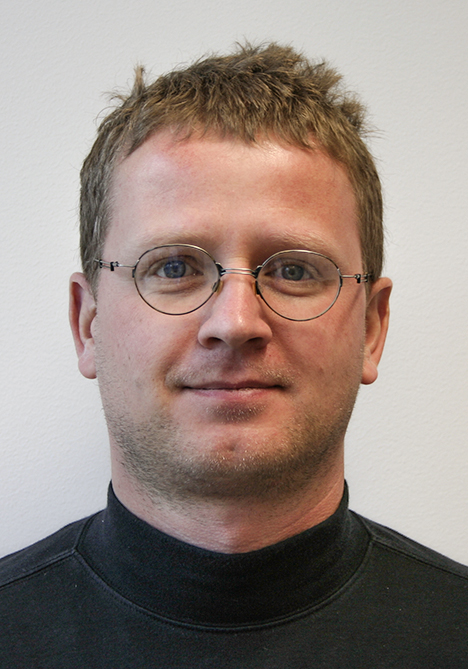
Erik Beckert, PhD Engineering
Position: Fraunhofer IOF Jena, Group leader Micro-assembly and System Integration
Lecturing: Optics Packaging Technologies for Harsh Environment
Erik Beckerts works in the field of micro assembly, system integration and packaging of micro- and laser-optical systems for more than 15 years now. His experience covers components and systems such as the green laser for the EXOMARS Raman-experiment, a space-suitable entangled photon source as well as many technology studies for lens and laser bench mounting technologies.
cv
Since 2005 Group Leader Micro Assembly and System Integration, Fraunhofer IOF
2005 PhD in Engineering
Since 2001 Engineer at Fraunhofer Institute for Applied Optics and Precision Engineering (IOF), Jena
1997 – 2001 Engineer at Institute for Microelectronic and Mechatronic Systems, Ilmenau
1992 – 1997 Study of Mechanical Engineering at Technical University, Ilmenau
Lecturing: Optics Packaging Technologies for Harsh Environment
Erik Beckerts works in the field of micro assembly, system integration and packaging of micro- and laser-optical systems for more than 15 years now. His experience covers components and systems such as the green laser for the EXOMARS Raman-experiment, a space-suitable entangled photon source as well as many technology studies for lens and laser bench mounting technologies.
cv
Since 2005 Group Leader Micro Assembly and System Integration, Fraunhofer IOF
2005 PhD in Engineering
Since 2001 Engineer at Fraunhofer Institute for Applied Optics and Precision Engineering (IOF), Jena
1997 – 2001 Engineer at Institute for Microelectronic and Mechatronic Systems, Ilmenau
1992 – 1997 Study of Mechanical Engineering at Technical University, Ilmenau
Imaging Optics Design with Freeform Optics - Jannick Roland
In this course, we will first provide an oveview status on freeform optics from a design, fabrication and metrology viewpoint. We will then detail a methodology for design and review some examples of freeform optics from design to manufacture.
In this course, we will first provide an oveview status on freeform optics from a design, fabrication and metrology viewpoint. We will then detail a methodology for design and review some examples of freeform optics from design to manufacture.
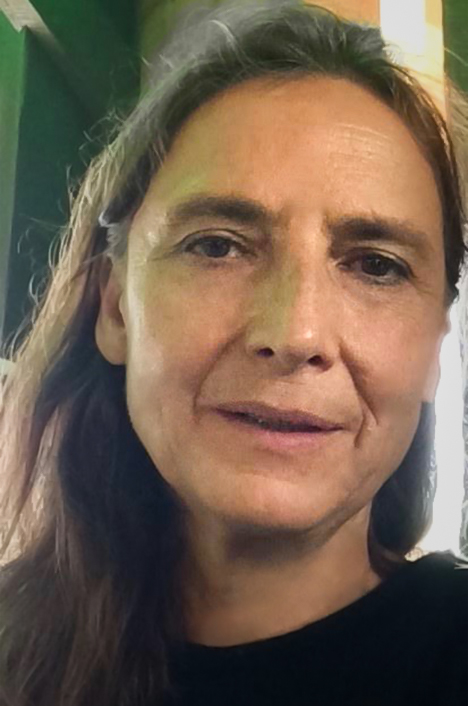
Jannick Rolland, PhD Optics
Position: Brian J. Thompson Professor of Optical Engineering
Director of the NSF I/UCRC Center for Freeform Optics
Lecturing: Freeform Optics
One of my very first large scale projects in optics was the design of the optics for SPOT4 (Satellite Pour Observation de la Terre), put in orbit March 24 1998 and operational till July 2013. Since, my interest in optical instrumentation has spanned a wide range of applications with a focus on head-worn display for the consumer market, microscopy, and space optics. In 2013, as a faculty at the University of Rochester, NY I led the launch of the National Science Foundation (NSF) Center for Freeform Optics (CeFO) headquartered in Rochester, NY, targeted at advancing the science and engineering of freeform optics across a wide range of applications, including space optics, in partnership with industry and government (www.centerfreeformoptics.org). Today my main research activities lie in optical system design and metrology of freeform optics.
cv
2009-present - Endowed professor, The Institute of Optics, University of Rochester, Rochester NY
1996-2008 - Professor, CREOL, College of Optics and Photonics, Orlando FL
1992-1996 - Research faculty, Computer Science, University of North Carolina at Chapel Hill, Chapel Hill NC
1990-1992 - Postdoctoral fellow, Computer Science, University of North Carolina at Chapel Hill, Chapel Hill NC
1990 - PhD in Optical Science, University of Arizona, Tucson Az
1984 - Diploma Ecole Superieure d'Optique, Palaiseau France
Director of the NSF I/UCRC Center for Freeform Optics
Lecturing: Freeform Optics
One of my very first large scale projects in optics was the design of the optics for SPOT4 (Satellite Pour Observation de la Terre), put in orbit March 24 1998 and operational till July 2013. Since, my interest in optical instrumentation has spanned a wide range of applications with a focus on head-worn display for the consumer market, microscopy, and space optics. In 2013, as a faculty at the University of Rochester, NY I led the launch of the National Science Foundation (NSF) Center for Freeform Optics (CeFO) headquartered in Rochester, NY, targeted at advancing the science and engineering of freeform optics across a wide range of applications, including space optics, in partnership with industry and government (www.centerfreeformoptics.org). Today my main research activities lie in optical system design and metrology of freeform optics.
cv
2009-present - Endowed professor, The Institute of Optics, University of Rochester, Rochester NY
1996-2008 - Professor, CREOL, College of Optics and Photonics, Orlando FL
1992-1996 - Research faculty, Computer Science, University of North Carolina at Chapel Hill, Chapel Hill NC
1990-1992 - Postdoctoral fellow, Computer Science, University of North Carolina at Chapel Hill, Chapel Hill NC
1990 - PhD in Optical Science, University of Arizona, Tucson Az
1984 - Diploma Ecole Superieure d'Optique, Palaiseau France
Freeform Optics Verification - Christopher Evans
This series of lectures will start from fundamentals -- calibration, uncertainty and traceability in freeform optics metrology. Design intent should be captured in the specification of the optic, for example in a drawing that is in accordance with ISO 10110. We will discuss freeform optics specifications that flow down to measurands that can be estimated en route to establishing that a specific optical surface meets the design intent. Does the designer have a specific manufacturing process in mind? Can this be captured in the surface specification -- and should it be? We will review the range of optics metrology methods available and discuss tools for rational comparison between available options. "Design for Metrology" will be a central theme. We will review commercially available technologies and emerging methods.
This series of lectures will start from fundamentals -- calibration, uncertainty and traceability in freeform optics metrology. Design intent should be captured in the specification of the optic, for example in a drawing that is in accordance with ISO 10110. We will discuss freeform optics specifications that flow down to measurands that can be estimated en route to establishing that a specific optical surface meets the design intent. Does the designer have a specific manufacturing process in mind? Can this be captured in the surface specification -- and should it be? We will review the range of optics metrology methods available and discuss tools for rational comparison between available options. "Design for Metrology" will be a central theme. We will review commercially available technologies and emerging methods.
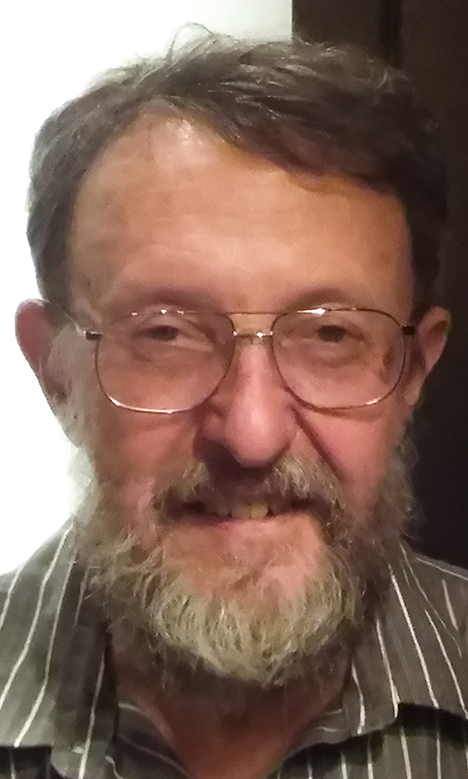
Christopher Evans, PhD Engineering
Position: Director, UNC Charlotte Center for Precision Metrology
Norvin K. Dickerson Distinguished Professor of Precision Engineering
Lecturing: Metrology for Freeform Optics
cv
2010-present: Professor UNC Charlotte Center for Precision Metrology, Mechanical Engineering
2001-2010; Chief Metrologist/Senior Research Scientist, Zygo Corporation
1985-2001: Engineer, Group Leader, National Institute of Standards and Technology
Norvin K. Dickerson Distinguished Professor of Precision Engineering
Lecturing: Metrology for Freeform Optics
cv
2010-present: Professor UNC Charlotte Center for Precision Metrology, Mechanical Engineering
2001-2010; Chief Metrologist/Senior Research Scientist, Zygo Corporation
1985-2001: Engineer, Group Leader, National Institute of Standards and Technology
Lithographic Grating Technology - Uwe Zeitner
Gratings are key components in space-borne spectrometers for earth observation and scientific missions. Their optical properties determine the achievable spectral resolution and signal quality of the instrument. Based on the specific requirements of contemporary spectrometers an overview of state-of-the-art fabrication technologies for the required high-end optical gratings will be given. This includes methods like ruling, holography, and direct write lithographic structuring. Their potential and limitations for the realization of a desired grating profile and related properties like high polarization independent diffraction efficiencies, good wave-front qualities, and low stray-light levels will be discussed. Different examples of gratings tailored for specific ESA space missions like GAIA, Sentinel-4/5, or DESIS will be shown.
Gratings are key components in space-borne spectrometers for earth observation and scientific missions. Their optical properties determine the achievable spectral resolution and signal quality of the instrument. Based on the specific requirements of contemporary spectrometers an overview of state-of-the-art fabrication technologies for the required high-end optical gratings will be given. This includes methods like ruling, holography, and direct write lithographic structuring. Their potential and limitations for the realization of a desired grating profile and related properties like high polarization independent diffraction efficiencies, good wave-front qualities, and low stray-light levels will be discussed. Different examples of gratings tailored for specific ESA space missions like GAIA, Sentinel-4/5, or DESIS will be shown.
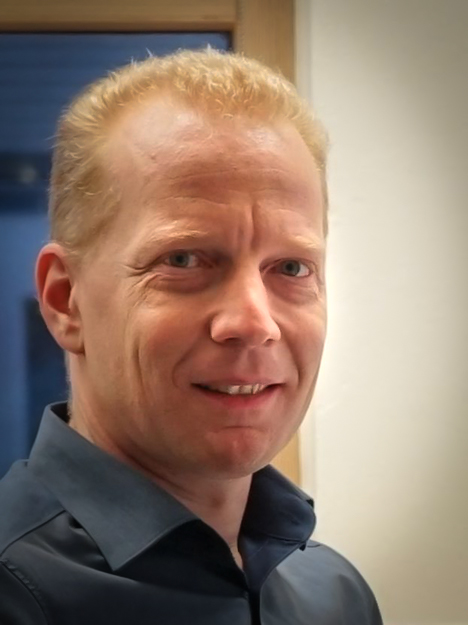
Uwe Zeitner, PhD Physics
Position:Head of Micro-Optical Systems Department at Fraunhofer IOF
Lecturing: Lithographic Grating Technology
cv
Worked at the Friedrich-Schiller-University Jena, Germany, in the field of fabrication of micro-optical elements and systems by e-beam lithography and resonator internal laser beam shaping. Since 1999 he is with the Fraunhofer Institute for Applied Optics and Precision Engineering (IOF), Jena, where he is currently heading the Micro-Optical Systems Department. Uwe Zeitner’s field of research is the development of micro- and nano-technological solutions for optical applications enabled by fundamental research in various fields. He has a strong background in the development of high-performance gratings for applications like laser pulse compression or space-borne spectroscopy for missions like GAIA, Sentinel-4/5, FLEX, or CarbonSat.
since 2017 Head of Micro-Optical Systems Department, Fraunhofer IOF Jena
2011 – 2016 Head of workgroup „Fabrication technologies for advanced Micro and Nano-Optics“, ZIK UltraOptics, Institute of Applied Physics, University Jena
2008 Habilitation in Experimental Physics, University Jena
2006 – 2016 Head of „Center for Advanced Micro- and Nano-Optics“, Fraunhofer IOF Jena
2004 – 2006 Head of workgroup „Fundamentals“, Fraunhofer IOF Jena
1999 PhD in Resonator internal laser beam shaping at University Jena
since 1999 Scientist at Fraunhofer IOF Jena
1995 – 1998 Scientist, Institute of Applied Physics, University Jena
1990 – 1995 study of Physics at Friedrich-Schiller-University Jena
Lecturing: Lithographic Grating Technology
cv
Worked at the Friedrich-Schiller-University Jena, Germany, in the field of fabrication of micro-optical elements and systems by e-beam lithography and resonator internal laser beam shaping. Since 1999 he is with the Fraunhofer Institute for Applied Optics and Precision Engineering (IOF), Jena, where he is currently heading the Micro-Optical Systems Department. Uwe Zeitner’s field of research is the development of micro- and nano-technological solutions for optical applications enabled by fundamental research in various fields. He has a strong background in the development of high-performance gratings for applications like laser pulse compression or space-borne spectroscopy for missions like GAIA, Sentinel-4/5, FLEX, or CarbonSat.
since 2017 Head of Micro-Optical Systems Department, Fraunhofer IOF Jena
2011 – 2016 Head of workgroup „Fabrication technologies for advanced Micro and Nano-Optics“, ZIK UltraOptics, Institute of Applied Physics, University Jena
2008 Habilitation in Experimental Physics, University Jena
2006 – 2016 Head of „Center for Advanced Micro- and Nano-Optics“, Fraunhofer IOF Jena
2004 – 2006 Head of workgroup „Fundamentals“, Fraunhofer IOF Jena
1999 PhD in Resonator internal laser beam shaping at University Jena
since 1999 Scientist at Fraunhofer IOF Jena
1995 – 1998 Scientist, Institute of Applied Physics, University Jena
1990 – 1995 study of Physics at Friedrich-Schiller-University Jena
Space Coating Manufacturing and Qualification - Uwe Schallenberg
The lecture starts with an overview of optical coatings for space applications, like anti-reflection, high-, low- and band-pass coatings. Rules of thumb for the general coating design are discussed and a brief excurse in theory and praxis of thin-film optical coatings in general will be provided. Emphasis will be put on the state-of –the-art manufacturing technology for the manufacturing of hard optical coatings, especially the sputtering technology and the ion-assisted deposition technology. Additional necessary technology for the on-line monitoring of coating layer thickness will be reviewed. A third major point is related to coating qualification for space applications. Typical qualification requirements and lessons learned from space projects will be reported.
The lecture starts with an overview of optical coatings for space applications, like anti-reflection, high-, low- and band-pass coatings. Rules of thumb for the general coating design are discussed and a brief excurse in theory and praxis of thin-film optical coatings in general will be provided. Emphasis will be put on the state-of –the-art manufacturing technology for the manufacturing of hard optical coatings, especially the sputtering technology and the ion-assisted deposition technology. Additional necessary technology for the on-line monitoring of coating layer thickness will be reviewed. A third major point is related to coating qualification for space applications. Typical qualification requirements and lessons learned from space projects will be reported.
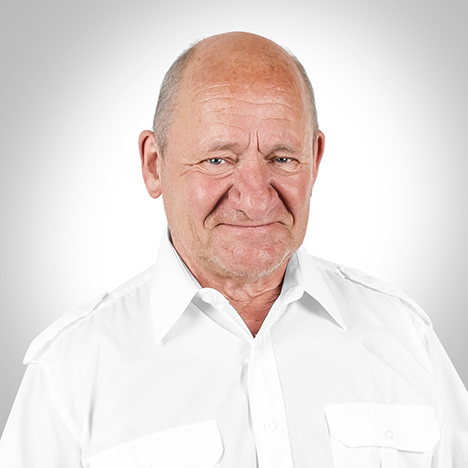
Uwe Schallenberg, MSc. Physics
Position: Director of Production, Laser Optics and Thin-Film Technology, Laser Components GmbH, Olching, Germany
Lecturing: Space Coating Manufacturing Technology and Qualification
cv
2014 – present Director of Production, Laser Optics and Thin-Film Technology, Laser Components GmbH
2012 – 2014 Self-employed as SCHALLENBERG OPTICS • Consulting & Training for Thin-Film Optics
2010 – 2012 Head R&D at Optics Balzers Jena GmbH (former mso jena)
1998 – 2010 Founder and one of the managing directors of mso jena Mikroschichtoptik GmbH
1992 – 1998 Scientific assistant at the thin-film department of the Fraunhofer Institute IOF Jena
1989 – 1991 Tutor in computer science and accounting at the Commercial College Jena
1977 – 1988 Scientific assistant at the thin-film laboratory of Carl Zeiss Jena
1977 Graduation of the University Jena as physicist
Lecturing: Space Coating Manufacturing Technology and Qualification
cv
2014 – present Director of Production, Laser Optics and Thin-Film Technology, Laser Components GmbH
2012 – 2014 Self-employed as SCHALLENBERG OPTICS • Consulting & Training for Thin-Film Optics
2010 – 2012 Head R&D at Optics Balzers Jena GmbH (former mso jena)
1998 – 2010 Founder and one of the managing directors of mso jena Mikroschichtoptik GmbH
1992 – 1998 Scientific assistant at the thin-film department of the Fraunhofer Institute IOF Jena
1989 – 1991 Tutor in computer science and accounting at the Commercial College Jena
1977 – 1988 Scientific assistant at the thin-film laboratory of Carl Zeiss Jena
1977 Graduation of the University Jena as physicist
Polarization Scrambler – Concepts, Optical Design, Manufacturability and Performances - Jerome Caron
Polarization scramblers are optical devices that depolarize light, and alter as little as possible light propagation so that they can be used in imaging instruments. Scramblers from the class of spatial pseudo-depolarizers are compact, passive components with high performance that are well suited for space applications. They have (or are currently) been built for several spectro-imagers to make the measurements insensitive to polarization: OMI, Envisat/Meris, Sentinel-3/OLCI, Sentinel-4/UVN, Sentinel-5p/Tropomi, Sentinel-5. In this course we will present their design, performance, manufacturing and testing. The Dual Babinet [1] is the most important design and will be assumed for the general discussion. Other types such as the HV depolarizer, the Meris scrambler, the plane-parallel scrambler and a few recent patents will be also presented.
[1] R.A.Chipman, J.P.McGuire, Analysis of spatial pseudodepolarizers in imaging systems, Opt. Eng. vol29 n12, pp1478-1484 (1990).
Polarization scramblers are optical devices that depolarize light, and alter as little as possible light propagation so that they can be used in imaging instruments. Scramblers from the class of spatial pseudo-depolarizers are compact, passive components with high performance that are well suited for space applications. They have (or are currently) been built for several spectro-imagers to make the measurements insensitive to polarization: OMI, Envisat/Meris, Sentinel-3/OLCI, Sentinel-4/UVN, Sentinel-5p/Tropomi, Sentinel-5. In this course we will present their design, performance, manufacturing and testing. The Dual Babinet [1] is the most important design and will be assumed for the general discussion. Other types such as the HV depolarizer, the Meris scrambler, the plane-parallel scrambler and a few recent patents will be also presented.
[1] R.A.Chipman, J.P.McGuire, Analysis of spatial pseudodepolarizers in imaging systems, Opt. Eng. vol29 n12, pp1478-1484 (1990).
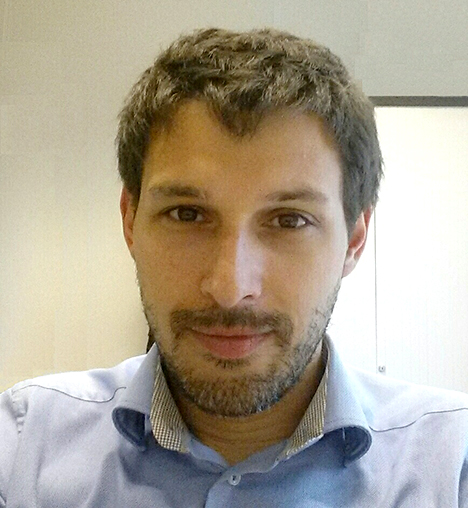
Jerome Caron, PhD Optics
Position: Optical designer at TNO, working on designs with freeform mirrors, pushbroom spectrometers and polarization optics
Lecturing: Polarization Scrambler – Concepts, Optical Design, Manufacturability and Performances
cv
He worked 9 years at the European Space Agency as consultant and optical performance engineer on instruments for future Earth observation missions. He was then involved in the preliminary phases of A-Scope, Premier, Sentinel-4, Sentinel-5, CarbonSat and Flex. At ESA he also followed and contributed to breadboarding activities on polarization scramblers, slit homogenizers, characterization and modelling of speckles from calibration diffusers.
2016-present Optical designer at TNO, Netherlands
2007-2016 Optical engineer at European Space Agency
2005-2007 System engineer at Sagem Défense et Sécurité, Paris, France
2004-2005 Laser engineer at Nevada Terawatt Facility, Reno, USA
2000-2003 PhD on volume and surface scattering of polarized light at Université Pierre et Marie Curie, France
1998-2000 Engineering degree from Ecole Supérieure d'Optique
1994-1998 Master of physics, Université de Poitiers, France
Lecturing: Polarization Scrambler – Concepts, Optical Design, Manufacturability and Performances
cv
He worked 9 years at the European Space Agency as consultant and optical performance engineer on instruments for future Earth observation missions. He was then involved in the preliminary phases of A-Scope, Premier, Sentinel-4, Sentinel-5, CarbonSat and Flex. At ESA he also followed and contributed to breadboarding activities on polarization scramblers, slit homogenizers, characterization and modelling of speckles from calibration diffusers.
2016-present Optical designer at TNO, Netherlands
2007-2016 Optical engineer at European Space Agency
2005-2007 System engineer at Sagem Défense et Sécurité, Paris, France
2004-2005 Laser engineer at Nevada Terawatt Facility, Reno, USA
2000-2003 PhD on volume and surface scattering of polarized light at Université Pierre et Marie Curie, France
1998-2000 Engineering degree from Ecole Supérieure d'Optique
1994-1998 Master of physics, Université de Poitiers, France
Optically Rough Surface Scatter Measurements and Modelling - Monika Kroneberger
Light scattering caused by the imperfections of optical and mechanical surfaces can critically affect the performance of space optical instruments (image quality, losses). It is therefore very important to predict and measure stray light performance of the optical instrument accurately.
This lecture is focusing on light scattering of mechanical surfaces and of diffusers. Special emphasis will be put on how to measure and model optically rough surface scatter. A second part will focus on the minimization of mechanical surface scatter by "black"coatings and a review of achievable performances.
Light scattering caused by the imperfections of optical and mechanical surfaces can critically affect the performance of space optical instruments (image quality, losses). It is therefore very important to predict and measure stray light performance of the optical instrument accurately.
This lecture is focusing on light scattering of mechanical surfaces and of diffusers. Special emphasis will be put on how to measure and model optically rough surface scatter. A second part will focus on the minimization of mechanical surface scatter by "black"coatings and a review of achievable performances.
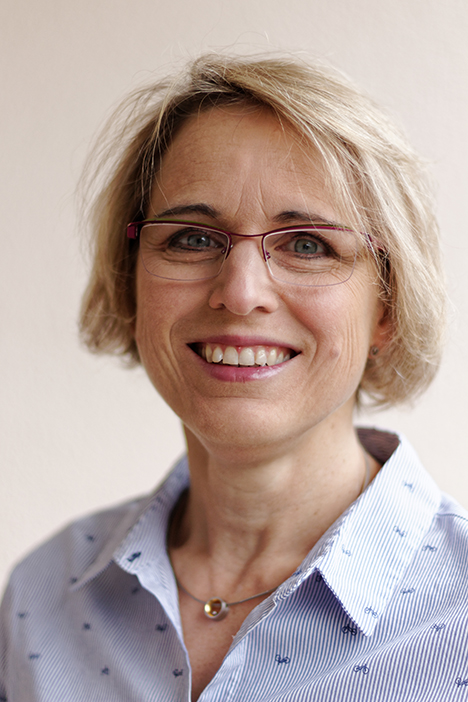
Monika Kroneberger, MSc. Physics, Optical Engineer
Position: Lead Optical Engineer, OHB(D)
Lecturing: Optically Rough Surface Scatter Measurements and Modelling
cv
Since 2013 Optical Instrument Engineer at OHB System AG (former Kayser-Threde GmbH)
2011 - 2013 Hembach Photonik GmbH
2009 - 2011 Simuloptics GmbH
2005 - 2009 Freelancer for Adphos AG
2004 - 2005 Freelancer Accenture Services GmbH
1999 - 2004 Freelancer SUN Microsystems GmbH
1996 - 2011 Freelancer Silicon Graphics GmbH
1992 - 1999 Doctoral Research Study at the Johann Wolfgang Goethe Universität Frankfurt am Main
1986 - 1991 Study of Physics at the Johann Wolfgang Goethe Universität Frankfurt am Main
Lecturing: Optically Rough Surface Scatter Measurements and Modelling
cv
Since 2013 Optical Instrument Engineer at OHB System AG (former Kayser-Threde GmbH)
2011 - 2013 Hembach Photonik GmbH
2009 - 2011 Simuloptics GmbH
2005 - 2009 Freelancer for Adphos AG
2004 - 2005 Freelancer Accenture Services GmbH
1999 - 2004 Freelancer SUN Microsystems GmbH
1996 - 2011 Freelancer Silicon Graphics GmbH
1992 - 1999 Doctoral Research Study at the Johann Wolfgang Goethe Universität Frankfurt am Main
1986 - 1991 Study of Physics at the Johann Wolfgang Goethe Universität Frankfurt am Main
Structural-Thermal-Optical Performance (STOP) Analysis of the Euclid Space Telescope - Sergio Mottini
Success of ESA’s Euclid cosmology mission depends on the stability of the telescope under loads transmitted from its environment, including the spacecraft bus. STOP analysis is the tool used to verify compliance with the tight image quality budgets of the focal plane instruments. The analysis proceeds through three coordinated sets of mathematical models to calculate, in sequence, temperature distributions, displacement and/or distortion of the optical elements, point spread functions at selected locations on the focal planes, and the resulting optical figures of merit. After a brief presentation of the mission objectives, the telescope and satellite design, and the environmental boundary conditions, the lecture will describe in some detail the procedure adopted, the results achieved and the lessons learnt at the time of the project’s Critical Design Review.
Success of ESA’s Euclid cosmology mission depends on the stability of the telescope under loads transmitted from its environment, including the spacecraft bus. STOP analysis is the tool used to verify compliance with the tight image quality budgets of the focal plane instruments. The analysis proceeds through three coordinated sets of mathematical models to calculate, in sequence, temperature distributions, displacement and/or distortion of the optical elements, point spread functions at selected locations on the focal planes, and the resulting optical figures of merit. After a brief presentation of the mission objectives, the telescope and satellite design, and the environmental boundary conditions, the lecture will describe in some detail the procedure adopted, the results achieved and the lessons learnt at the time of the project’s Critical Design Review.
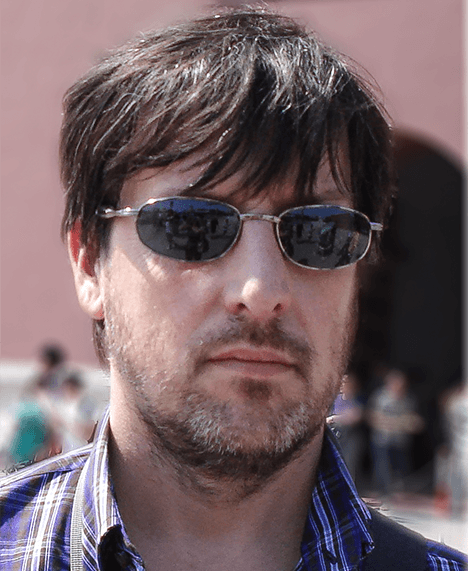
Sergio Mottini, MSc Electrical Engineer
Position: Senior Optical Engineer in the Optics & Science Solutions Unit at Thales Alenia Space in Italy
Lecturing: Structural-Thermal-Optical Performance (STOP) Analysis of the Euclid Space Telescope
cv
Since 2000 he works at Thales Alenia Space (formerly Alenia Spazio) as optical analyst and engineer for a wide range of applications, including laser metrology systems and interferometers, X-ray telescopes, optical communication, quantum sensors. He’s currently involved in the analysis of thermo-elastic effects on the optical performance of the METIS coronagraph, the XIPE and ATHENA X-ray telescopes and the Euclid optical/NIR telescope
2000 - present Optical Engineer at Thales Alenia Space (formerly Alenia Spazio)
1999 – 2000 Prima Electronics S.p.A. Software Engineer for movement and technology control for 3D cutting laser machines
1998 – 1999 Astronomical Observatory of Turin. Optical design of astronomical instruments
1997 – 1998 Design and development of relational databases for the State Archives in Turin
1996 Web service designer for enterprises
1995 Degree in Electrical Engineering at École Supérieure d’Électricité (SUPELEC), France. Research in the field of non-linear optical propagation and self-collimation in photorefractive crystals.
Lecturing: Structural-Thermal-Optical Performance (STOP) Analysis of the Euclid Space Telescope
cv
Since 2000 he works at Thales Alenia Space (formerly Alenia Spazio) as optical analyst and engineer for a wide range of applications, including laser metrology systems and interferometers, X-ray telescopes, optical communication, quantum sensors. He’s currently involved in the analysis of thermo-elastic effects on the optical performance of the METIS coronagraph, the XIPE and ATHENA X-ray telescopes and the Euclid optical/NIR telescope
2000 - present Optical Engineer at Thales Alenia Space (formerly Alenia Spazio)
1999 – 2000 Prima Electronics S.p.A. Software Engineer for movement and technology control for 3D cutting laser machines
1998 – 1999 Astronomical Observatory of Turin. Optical design of astronomical instruments
1997 – 1998 Design and development of relational databases for the State Archives in Turin
1996 Web service designer for enterprises
1995 Degree in Electrical Engineering at École Supérieure d’Électricité (SUPELEC), France. Research in the field of non-linear optical propagation and self-collimation in photorefractive crystals.
AIT of On- and Off-axis telescopes - Matthias Erdmann
The optical alignment of the telescope is a key activity of the AIT process of On- and Off-axis telescopes. The method described and practiced in the lecture is based on the fact that any alignment activity (shifting and tilting of optical elements) influences only the low order aberrations of the optical system. For the alignment the Wave Front Error (WFE) of the telescope is measured (e.g. by auto-collimation) and decomposed in low order aberration contributions. Based on analysis of the as-built model of the telescope and probing of the pre-aligned telescope optics sensitivities of low order WFE contributions to all optical alignment Degree Of Freedoms can be evaluated. Based on these sensitivities the next step of alignment improvement can be calculated, executed and verified. Recursive application of these technique converges to a perfect optical alignment after two or three iterations. For Korsch type telescopes including Three Mirror Anastigmats (TMA) the typical aberration and aberration sensitivities field gradients are discussed and their utilisation for the alignment is described and practiced.
The optical alignment of the telescope is a key activity of the AIT process of On- and Off-axis telescopes. The method described and practiced in the lecture is based on the fact that any alignment activity (shifting and tilting of optical elements) influences only the low order aberrations of the optical system. For the alignment the Wave Front Error (WFE) of the telescope is measured (e.g. by auto-collimation) and decomposed in low order aberration contributions. Based on analysis of the as-built model of the telescope and probing of the pre-aligned telescope optics sensitivities of low order WFE contributions to all optical alignment Degree Of Freedoms can be evaluated. Based on these sensitivities the next step of alignment improvement can be calculated, executed and verified. Recursive application of these technique converges to a perfect optical alignment after two or three iterations. For Korsch type telescopes including Three Mirror Anastigmats (TMA) the typical aberration and aberration sensitivities field gradients are discussed and their utilisation for the alignment is described and practiced.
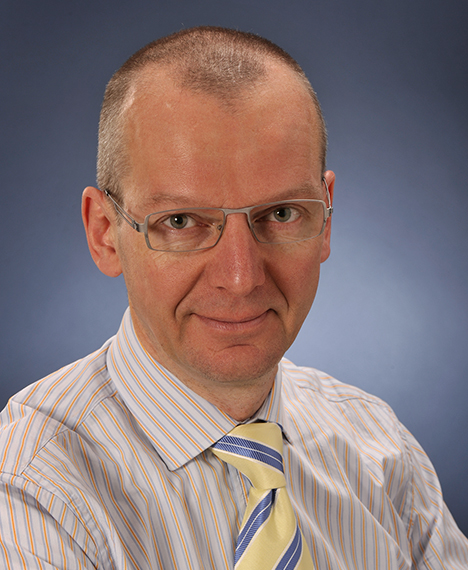
Matthias Erdmann, MSc. Optical Engineer
Position: Sentinel 5 Performance Engineer at ESA
Lecturing: AIT of On- and Off-axis telescopes
cv
2014 – present Sentinel 5 Performance Engineer at ESA
2006 - 2013 GAIA Payload System Engineer at ESA
1996 - 2005 Systems Engineer Optics at Kayser-Threde (D)
1990 - 1995 Optical Designer at Steinheil Munich (D)
1990 Finalization of Optics study in Cologne
Lecturing: AIT of On- and Off-axis telescopes
cv
2014 – present Sentinel 5 Performance Engineer at ESA
2006 - 2013 GAIA Payload System Engineer at ESA
1996 - 2005 Systems Engineer Optics at Kayser-Threde (D)
1990 - 1995 Optical Designer at Steinheil Munich (D)
1990 Finalization of Optics study in Cologne
Detector Technology - Kyriaki Minoglou
The major objective of this lecture is to make the participants familiar with the different types of detectors that can be used in space instruments applications. Design, technology and characterization of detectors and the relevant topics will be discussed.
The major objective of this lecture is to make the participants familiar with the different types of detectors that can be used in space instruments applications. Design, technology and characterization of detectors and the relevant topics will be discussed.
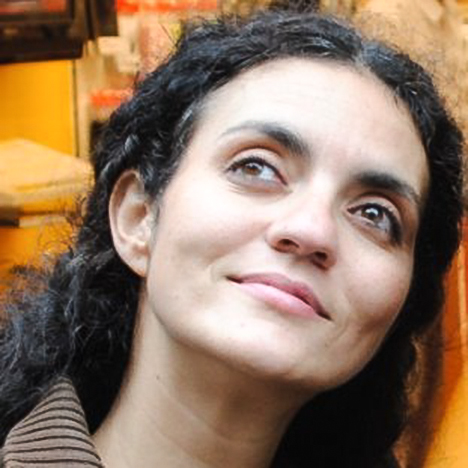
Kiriaki Minoglou, PhD Opto-electronics
Position: Opto-electronics Engineer at ESA
Lecturing: Mechanical Engineering
cv
2014 – present ESA-ESTEC, Opto-electronics Engineer
2007 – 2014 imec, Belgium, Detector Research Engineer
2002 – 2007 Department of Informatics, University of Athens, Greece, Ph.D in Optoelectronics
2001 – 2007 NCSR-Demokritos, Institute of Microelectronics, Athens, Greece, Research Engineer
2001 – 2007 Technological Educational Institute of Athens, Greece, Laboratory Teaching Assistant
2000 – 2002 Department of Informatics, University of Athens, Greece, M.Sc. in Microelectronics
1994 – 2000 Aristotle University of Thessaloniki, Greece, MEng. in Electrical Engineering
Lecturing: Mechanical Engineering
cv
2014 – present ESA-ESTEC, Opto-electronics Engineer
2007 – 2014 imec, Belgium, Detector Research Engineer
2002 – 2007 Department of Informatics, University of Athens, Greece, Ph.D in Optoelectronics
2001 – 2007 NCSR-Demokritos, Institute of Microelectronics, Athens, Greece, Research Engineer
2001 – 2007 Technological Educational Institute of Athens, Greece, Laboratory Teaching Assistant
2000 – 2002 Department of Informatics, University of Athens, Greece, M.Sc. in Microelectronics
1994 – 2000 Aristotle University of Thessaloniki, Greece, MEng. in Electrical Engineering
Hands-on Activity - Bernd Harnisch, Volker Kirschner
The task of the hands-on activity is to design, manufacture and test a telecentric projection lens. Such lens type might be part of the payload for planetary exploration. The participants will work in groups of two. For the design the participants can make use of the optical software CodeV, for which a 1-day introduction is given in the Begin of the course. For the hardware implementation three stock lenses from Edmund Optics and structural material will be provided. The lens performances in MTF and telecentricity shall be verified by test.
The task of the hands-on activity is to design, manufacture and test a telecentric projection lens. Such lens type might be part of the payload for planetary exploration. The participants will work in groups of two. For the design the participants can make use of the optical software CodeV, for which a 1-day introduction is given in the Begin of the course. For the hardware implementation three stock lenses from Edmund Optics and structural material will be provided. The lens performances in MTF and telecentricity shall be verified by test.
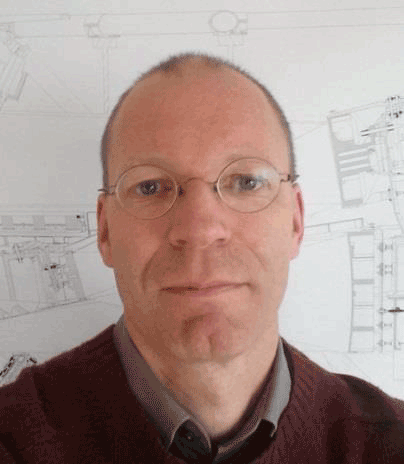
Volker Kirschner, MSc. Physics
Position: Optical Instrument Engineer, ESA
Lecturing: Hands-on activity
Volker Kirschner is Optical Instrument Engineer at the European Space Agency. In his position in the TEC Directorate he supports projects regarding optical design, straylight, manufacturing of optics and testing. His experience is based on his support to MERIS, Herschel, Planck, Sentinel-2 and Sentinel-5.
since 2001 Optical Instrument Engineer at the European Space Agency, Noordwijk
1998 - 2001 Optical Engineer at Dutch Applied Research Organisation TNO, Delft
1997 - 1998 Young Graduate Trainee at the European Space Agency, Noordwijk
1996 - 1997 Research Assistant at Fraunhofer Institute for Applied Optics and Precision Mechanics, Jena
1989 - 1996 Study of Physics at Friedrich-Schiller University Jena
Lecturing: Hands-on activity
Volker Kirschner is Optical Instrument Engineer at the European Space Agency. In his position in the TEC Directorate he supports projects regarding optical design, straylight, manufacturing of optics and testing. His experience is based on his support to MERIS, Herschel, Planck, Sentinel-2 and Sentinel-5.
since 2001 Optical Instrument Engineer at the European Space Agency, Noordwijk
1998 - 2001 Optical Engineer at Dutch Applied Research Organisation TNO, Delft
1997 - 1998 Young Graduate Trainee at the European Space Agency, Noordwijk
1996 - 1997 Research Assistant at Fraunhofer Institute for Applied Optics and Precision Mechanics, Jena
1989 - 1996 Study of Physics at Friedrich-Schiller University Jena
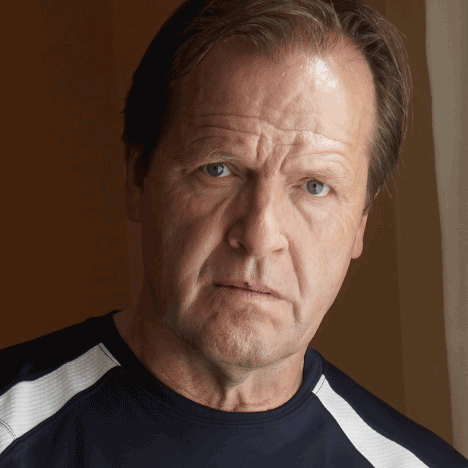
Bernd Harnisch, PhD Physics
Position: Course academic programme manager
Lecturing: Hands-on application
worked 23 years at the European Space Agency in the Optics section as optical engineer. During his career he was responsible for technology developments on telescopes, spectrometers and lightweight ceramic mirror materials. Further on he was supporting the following optical flight instruments: GOMOS on ENVISAT, MSG, GERB on MSG, NIRSpec for JWST, MIRI for JWST and SEOSAT.
cv
2016 - present SOIDT Course academic programme manager
1992 - 2015 ESTEC, optical engineer in the Optics section
1997 - 1992 Scientific Assistant in at Friedrich-Schiller University Jena
1985 - 1987 Academy of Sciences Jena
1981 - 1985 PhD in Holographic Interferometry at Friedrich-Schiller University Jena
1976 - 1981 study of Physics at Friedrich-Schiller University Jena
Lecturing: Hands-on application
worked 23 years at the European Space Agency in the Optics section as optical engineer. During his career he was responsible for technology developments on telescopes, spectrometers and lightweight ceramic mirror materials. Further on he was supporting the following optical flight instruments: GOMOS on ENVISAT, MSG, GERB on MSG, NIRSpec for JWST, MIRI for JWST and SEOSAT.
cv
2016 - present SOIDT Course academic programme manager
1992 - 2015 ESTEC, optical engineer in the Optics section
1997 - 1992 Scientific Assistant in at Friedrich-Schiller University Jena
1985 - 1987 Academy of Sciences Jena
1981 - 1985 PhD in Holographic Interferometry at Friedrich-Schiller University Jena
1976 - 1981 study of Physics at Friedrich-Schiller University Jena
Registration
For registration to the course please follow the link: https://atpi.eventsair.com/QuickEventWebsitePortal/soidt-2018/2018.
The registration for the course is closed.
The registration for the course is closed.
Accreditation
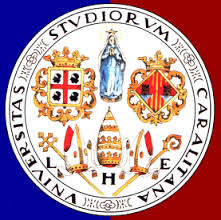
For those students that request the accreditation of credits from the European Credit Transfer and Accumulation System (ECTS) for their course attendance the course will offer a written test at the end of the course. The evaluation of the test, together with the evaluation of the hands-on activity, will output a "positive" or "negative" mark, which will be documented by the course certificate and an additional document stating the successful passing of the examen. These will be issued for each student so that he/she can present it to his/her own University administration in order to obtain ECTS credits. However, it is the responsibility of each student to discuss with his/her own University professor(s) and administration to get the course on Space Optics Instrument and Technology for the ECTS credits accreditation from his/her University approved. The Faculty of Electronic Engineering of the University of Cagliari, Italy has already formally approved that 4 ECTS will be recognised to their students by participating at the course and passing the final exam (University record no. 182 of 19/12/2016).
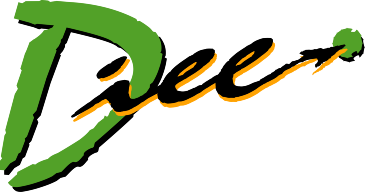
Sponsor
The event is sponsored by the companies represented below by their logo. They act as a benefactor for a young student, allowing her/him to participate on the course.


